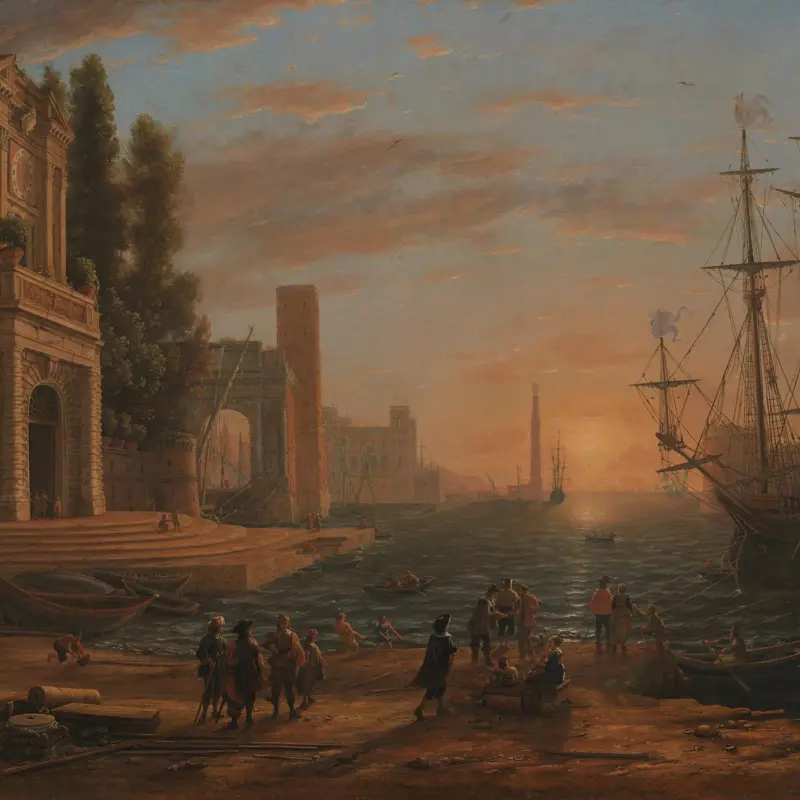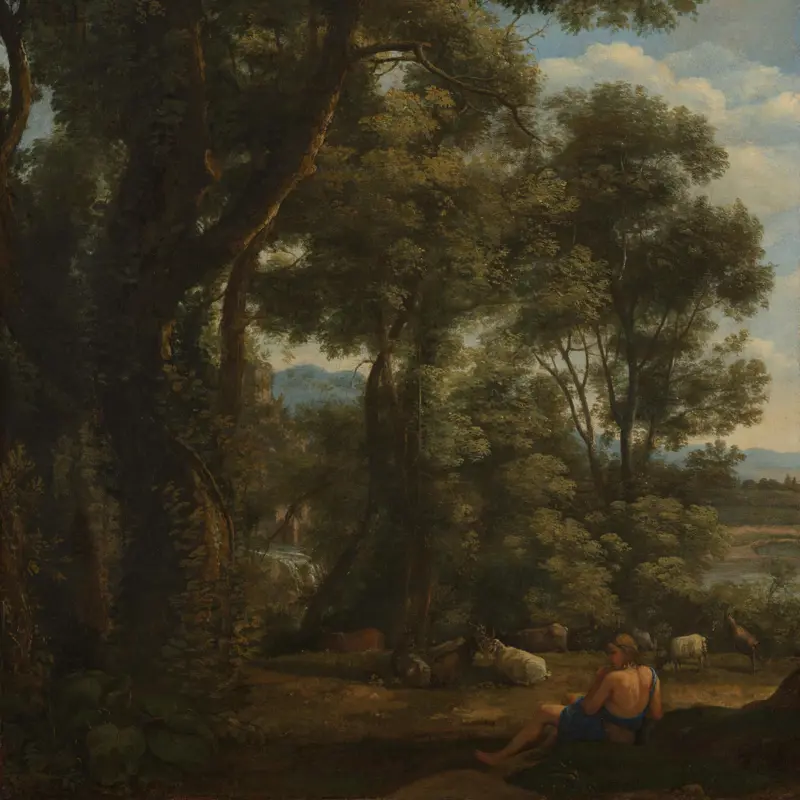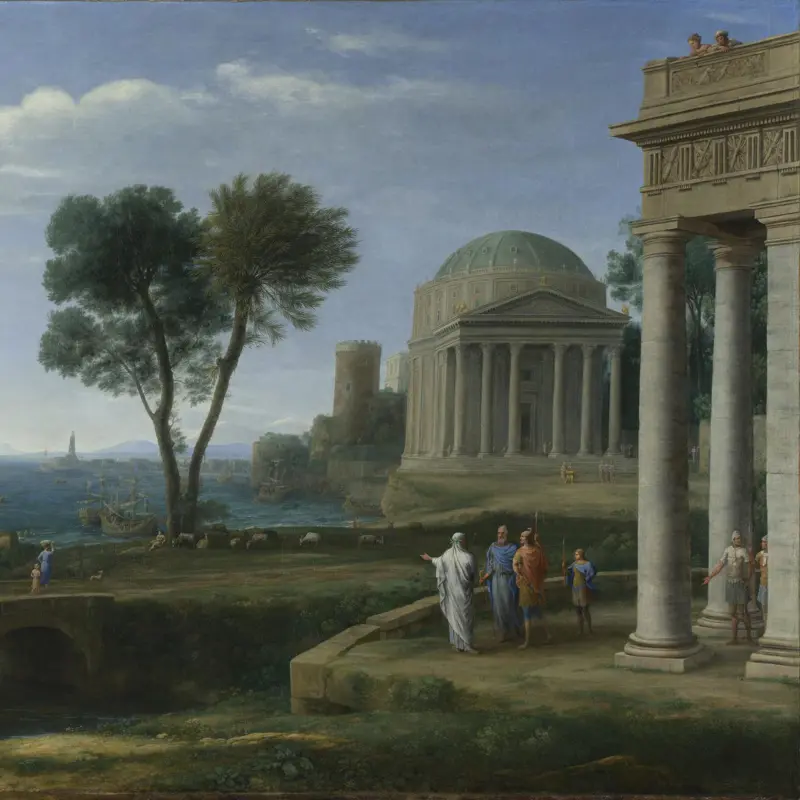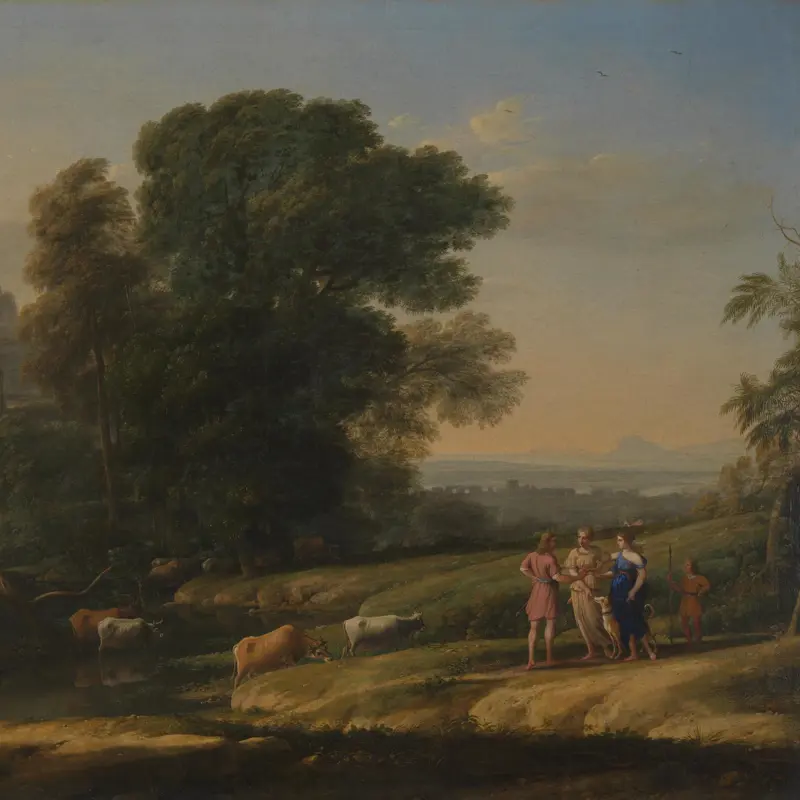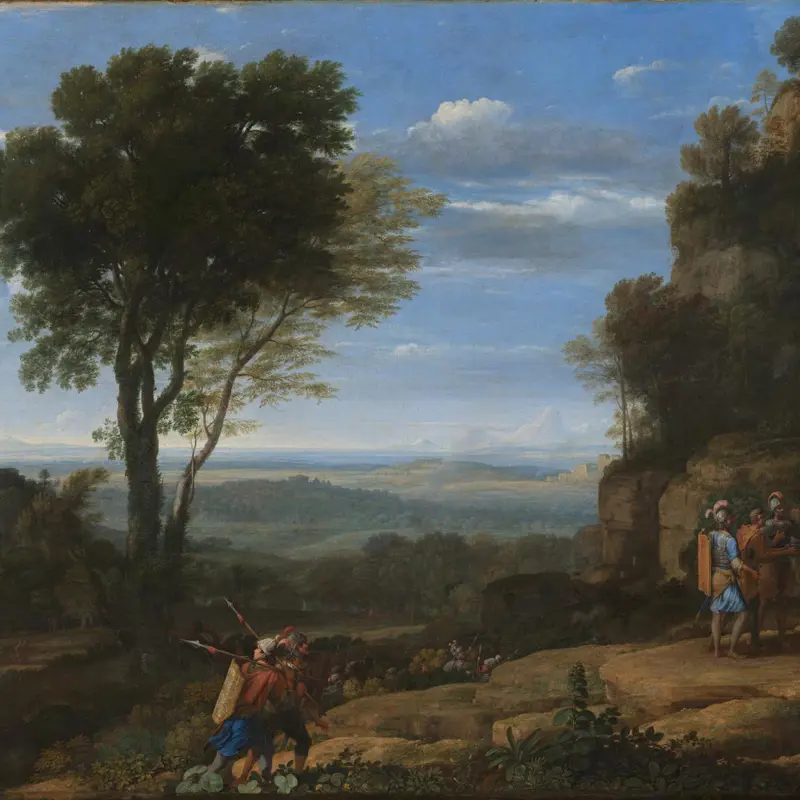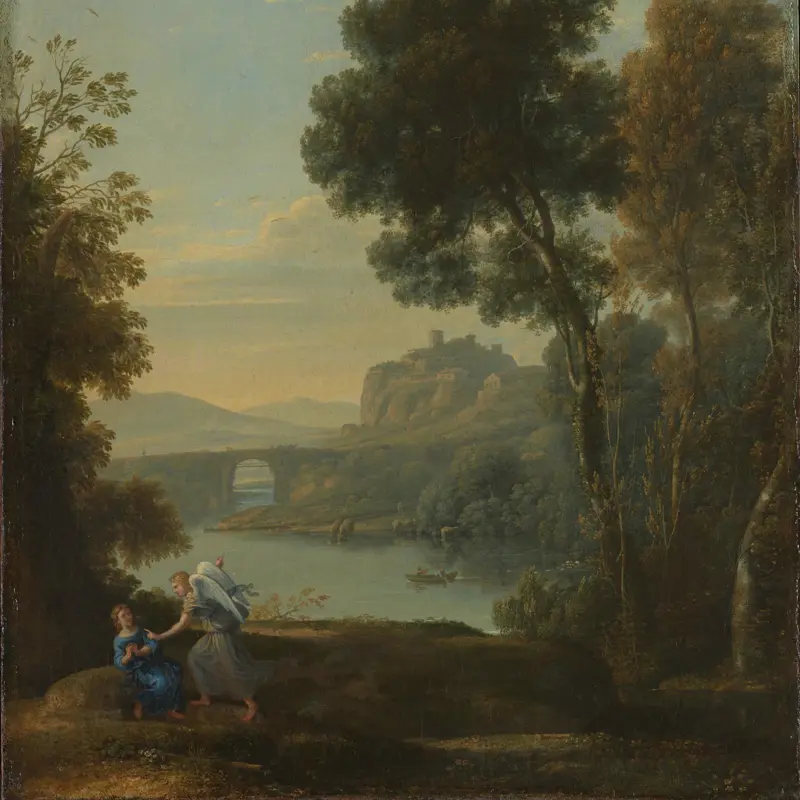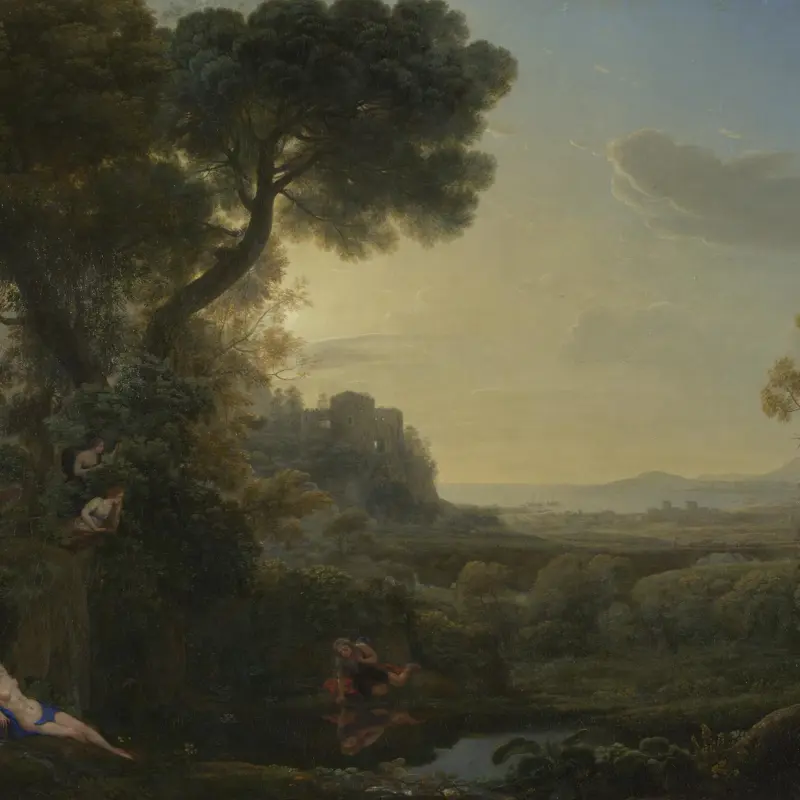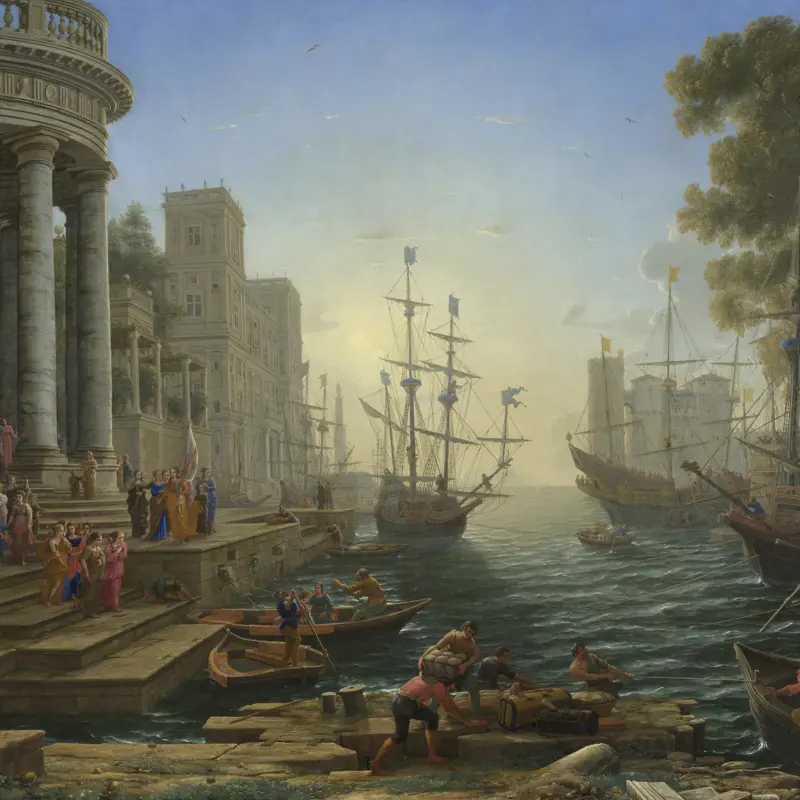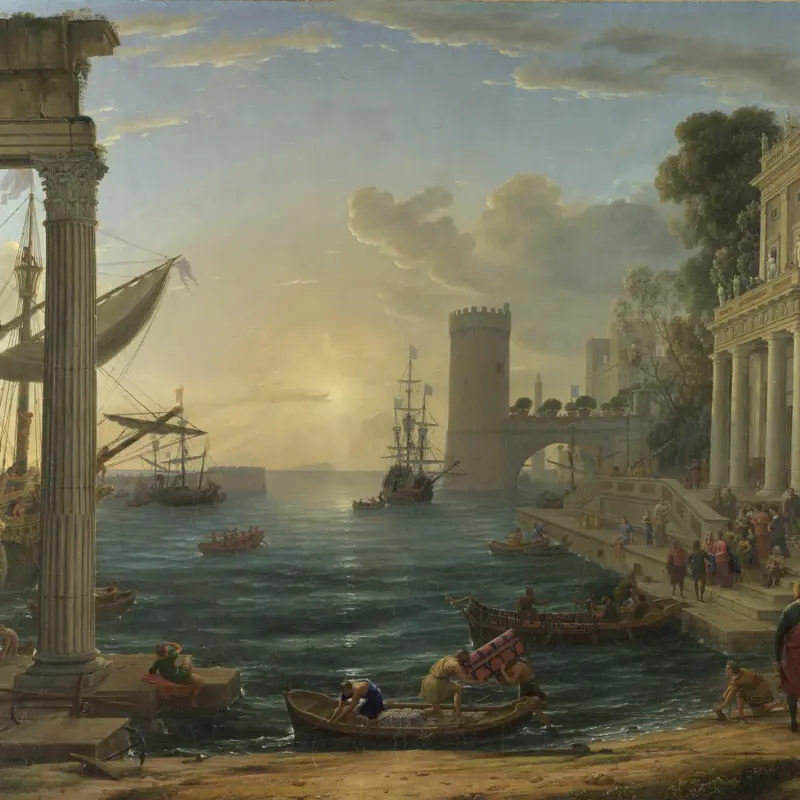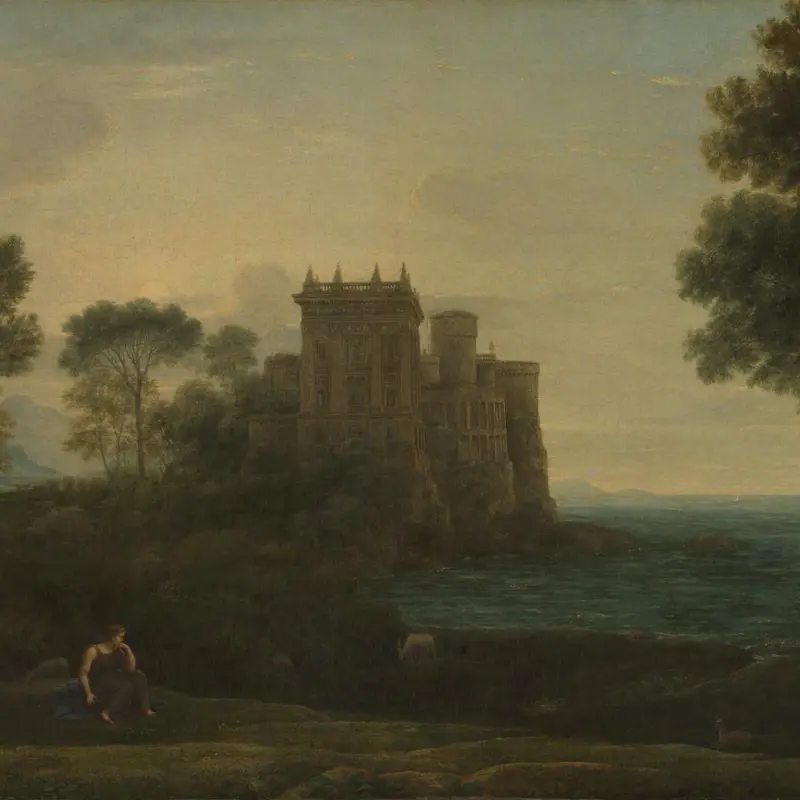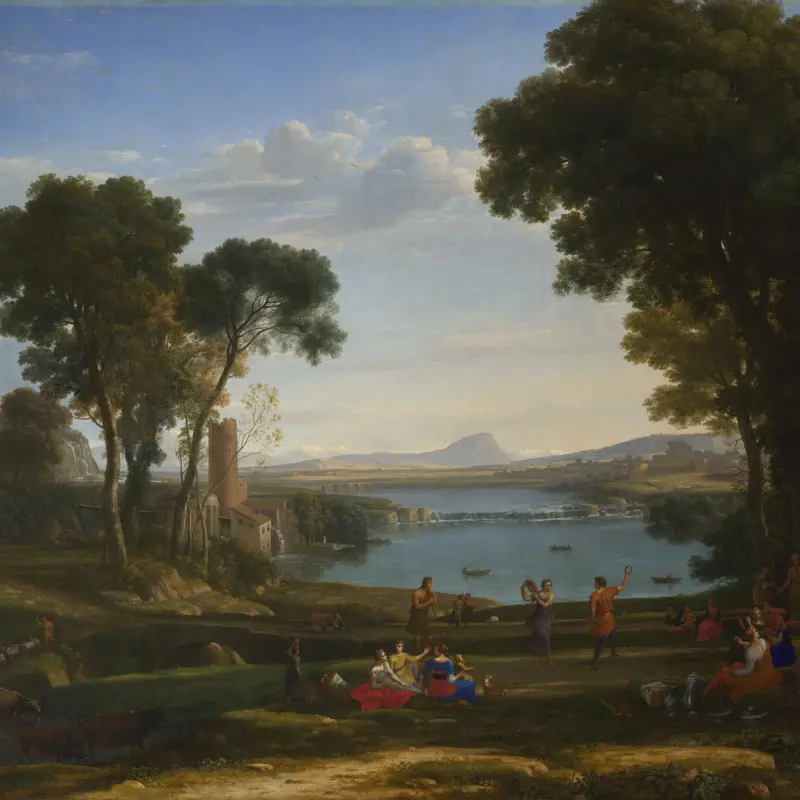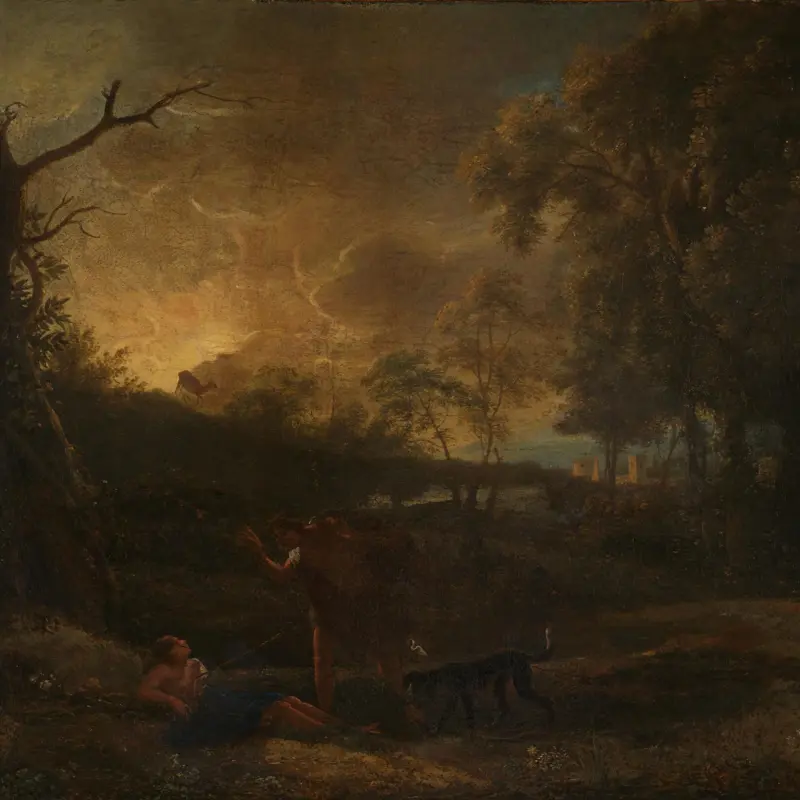Claude, 'A View in Rome', 1632
About the work
Overview
This painting combines a view of Rome, on the left, with an imaginary ruin, on the right. The distant view is of the sixteenth-century church of Santa Trinità de' Monti, where Claude would be buried. Beside this is the convent of the Sacro Cuore. These buildings are now at the top of the Spanish Steps, which were built during the eighteenth century. Further to the right is the Palazzo Zuccari and on the horizon in the centre is the Quirinal Palace, the Pope’s summer residence.
The foreground scene takes place in front of an ancient temple and a statue of Apollo. The young man in the hat may be giving alms to the peasant woman or paying for the services of the two young girls behind her. These kinds of figures do not appear in other paintings by Claude, so they could have been painted by another artist.
Key facts
Details
- Full title
- A View in Rome
- Artist
- Claude
- Artist dates
- 1604/5? - 1682
- Date made
- 1632
- Medium and support
- oil on canvas
- Dimensions
- 60.3 × 84 cm
- Inscription summary
- Signed; Dated
- Acquisition credit
- Bought, 1890
- Inventory number
- NG1319
- Location
- Room 39
- Collection
- Main Collection
- Frame
- 17th-century Roman Frame
Provenance
Additional information
Text extracted from the ‘Provenance’ section of the catalogue entry in Humphrey Wine, ‘National Gallery Catalogues: The Seventeenth Century French Paintings’, London 2001; for further information, see the full catalogue entry.
Exhibition history
-
2014Bassifondi del Barocco. Roma dei vizi, della miseria e degli eccessi. / Les Bas-fonds du baroque. La Rome des vices, de la misère et des excèsAcadémie de France à Rome, Villa Medici7 October 2014 - 18 January 2015Petit Palais, Musée des Beaux Arts de la Ville de Paris24 February 2015 - 24 May 2015
-
2017Frederic William Burton: For the Love of ArtNational Gallery of Ireland24 October 2017 - 14 January 2018
Bibliography
-
1761London and Its Environs Described: Containing an Account of Whatever is Most Remarkable for Grandeur, Elegance, Curiosity or Use, in the City and in the Country Twenty Miles around it, 6 vols, London 1761
-
1766T. Martyn, The English Connoisseur, London 1766
-
1829
J. Smith, A Catalogue Raisonné of the Works of the Most Eminent Dutch, Flemish, and French Painters: In Which is Included a Short Biographical Notice of the Artists, with a Copious Description of Their Principal Pictures […], 9 vols, London 1829-1842
-
1829British Institution, Catalogue of Pictures by Italian, Spanish, Flemish, Dutch, and English Masters, with which the Proprietors have Favoured the Institution: June 1829, London 1829
-
1905E. Dillon, Claude, London 1905
-
1914H. Walpole, The Letters of Horace Walpole, vol. 2, ed. P. Toynbee, Oxford 1914
-
1946Martin Davies, National Gallery Catalogues: French School, London 1946
-
1957Martin Davies, National Gallery Catalogues: French School, 2nd edn (revised), London 1957
-
1960E. Knab, 'Dir Anfänge des Claude Lorrain', Jahrbuch der Kunsthistorischen Sammlungen in Wien, LVI, 1960, pp. 63-164
-
1961M. Röthlisberger, Claude Lorrain: The Paintings, London 1961
-
1961M. Dobroklonsky, 'The Drawings of Claude Lorrain in the Hermitage', The Burlington Magazine, CIII, 1961, p. 395
-
1961M. Waddingham, 'Alla ricerca di Agostino Tassi', Paragone, CXXXIX, 1961, pp. 9-23
-
1968M. Röthlisberger, Claude Lorrain: The Drawings, London 1968
-
1968M. Röthlisberger, 'Additions to Claude', The Burlington Magazine, CX/780, 1968, pp. 115-9
-
1969I.G. Kennedy, 'Claude Lorrain and Topography', Apollo, XC, 1969, pp. 304-9
-
1969M. Kitson, The Art of Claude Lorrain (exh. cat. Laing Art Gallery, 27 September - 26 October 1969), London 1969
-
1974L. Gowing, 'Nature and the Ideal in the Art of Claude', Art Quarterly, XXXVII, 1974, pp. 90-6
-
1975M. Röthlisberger, L'opera completa di Claude Lorrain, Milan 1975
-
1979P. Conisbee, 'Pre-Romantic "Plein-air" Painting', Art History, II/4, 1979, pp. 413-28
-
1982H.D. Russell, Claude Lorrain 1600-1682 (exh. cat. National Gallery of Art, Washington, 17 October 1982 - 2 February 1983), Washington 1982
-
1989H. Langdon, Claude Lorrain, Oxford 1989
-
1994H. Wine, Claude: The Poetic Landscape (exh. cat. The National Gallery, London, 26 January - 10 April 1994), London 1994
-
1996W. Schade, Claude Lorrain: Gemälde und Zeichnungen, Munich 1996
-
1996P. Conisbee, 'The Early History of Plein-Air Painting', in In the Light of Italy: Corot and Early Open-Air Painting, Washington 1996
-
2001H. Wine, National Gallery Catalogues: The Seventeenth Century French Paintings, London 2001
-
2001
C. Baker and T. Henry, The National Gallery: Complete Illustrated Catalogue, London 2001
About this record
If you know more about this work or have spotted an error, please contact us. Please note that exhibition histories are listed from 2009 onwards. Bibliographies may not be complete; more comprehensive information is available in the National Gallery Library.

